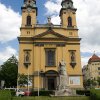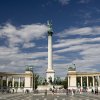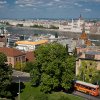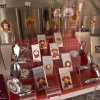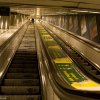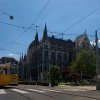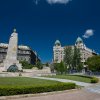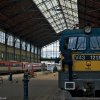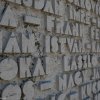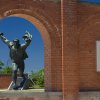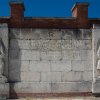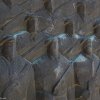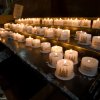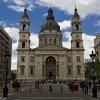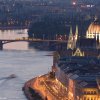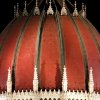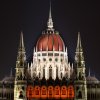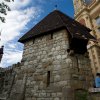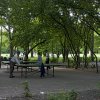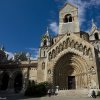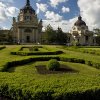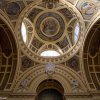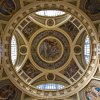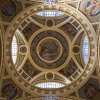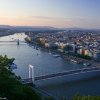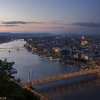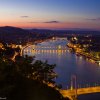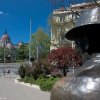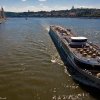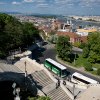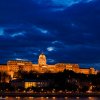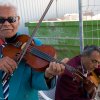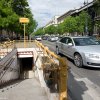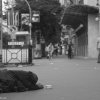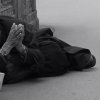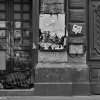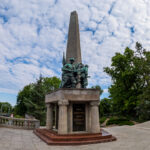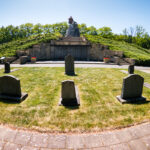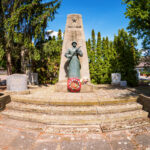Buda and Pest, an eternal love
The Hungarian capital is often and too willingly called “Paris of the East”. It easily sustains that comparison. Instead of Seine river and Notre Dame there you can have a boat ride on Danube and view the city from Saint Steven’s Basilica. By its charming Mediterranean blend of Puszta, paprika and parties Budapest knocks Paris down a peg.
However, at first both districts Buda and Pest are a poem about all things called history and city planning. Lovers of impressive and lovely architecture will surely feel like Alice in Wonderland when sauntering between Danube’s riverside and the Andrássy út. When having a stroll you’ll surely notice one thing quickly: for the Magyars history plays immensely important role. In opposite to Western or respectively West German victor’s justice, which means blowing up all Communist style things1, even if they only rudimentarily look like that, the Hungarians are going a way of architectonic consensus. Erstwhile icons of Communism are integrated and accepted all the same like the remainings of ancient Austrian-Hungarian empire. Vienna, the second urban center of the Habsburgs, is located only 250km upstream by the way.
Closer to the Hungarian capital, but in the South and downstream of Houses of Parliament, Chain bridge & Co., a very special refuge is located. At the Memento Park all those steely comrades found a place to rest in peace, which once, in times of Stalin, Breshnev and Kádár, lined up on the streets and adorned parks. At 11:00 the direct daily coach is leaving from Budapest’s Deák Ferenc tér square2. A small “Memento Park” sign behind the front screen shows you if you are about to enter the correct bus.
Not far from Deák tér the spires of Saint Steven’s Basilica are piercing the sea of houses. Back in 2005 the basilica’s 100-year existence had been celebrated. The southern bell tower is accessible by elevator or a 364 steps counting stair. From the top of the church you’ll have a marvellous view of the Danube metropolis. The basilica’s interior is quite restricted to visitors though, as the central area providing the best view up to the magnificent cupola is often closed, unfortunately.
Near the basilica you can find the architectonic star per se: The Houses of Parliament. That more than 250 meters wide neo-Gothic building impresses with its filigree facade elements and the beautifully arranged dome, which reminds a bit of the hub of Tuscany, Florence. The building looks really sexy when the sun already went down and the lights go on…
The main artery of sauntering and cruising is the Andrássy út, which has its source in the area close to basilica and connects the eastern riverside of Danube with the Heroes’ Square and the municipal forest, located behind the hero monuments. By the way, underneath the avenue’s blacktop you can find continental Europe’s oldest underground, Földalatti. If the sun is shining and the temperatures are rising, then the municipal forest as well as the Margit-sziget becomes an open air crowd puller par excellence. Getting in touch with the feel good atmosphere there is an unforgettable experience.
Despite all activities on river Danube that stream is not the first choice when it is about cooling down. Even at high temperatures Budapest’s spas are the winner by a nose if locals want to have a swim or just relax in the water. There are even parties celebrated whose motto of the night is water, pools and showers. The biggest attraction are Budapest’s shady city hiking trails though as they are lined by trees and the most different stalls, ranging from beer and candy floss to ice cream and paintings. In the case of getting too much sun in your face, visiting the theme park will surely help you to turn sunstroke caused headache into feeling like death warmed up when taking a ride with emetic roller coasters.
Watching the sunset from Gellert hill, from the citadel and the independence monument, is something really special. One or two pleasure boats cut the waves while under your feet the Danube floats between the flat Pest and the hilly Buda towards the South. Bit by bit the disappearing sun paints all facades first with a deep and strong orange, then finally with a shy pink flowing into a strong purple. Shortly after the city becomes magically illuminated little by little, as if the lamps would only have waited to give the blue hour a golden counterpart.
The Hungarian capital has enough on offer to delight visitors; easily more than a week can be spent; and even after a week one cannot say that everything has been seen and experienced. Here is a little, but actually totally un-Hungarian hint for all things called eating. Donatella’s Kitchen is located in the Király út and delights sophisticated palates with really good Italian cuisine. In an open kitchen you can watch the chef preparing homemade pizza and pasta. Lots of attention is paid details such as having fresh Parmigiano and top-notch olive oils on offer, the latter optionally flavoured with garlic, chilli or different Italian herbs.
Though, beside all beauty and urban elegance one will also face abject poverty. That is also Budapest. Unfortunately. When sauntering around you’ll be confronted with that inevitably. For instance with a home, that is nothing more than a bed, a blanket between the stanchions of an entrance. Or the aged mother on the street; staying for hours in a prayer’s position from shame of showing her face. Next to her a paper cup with some worthless small coins in it. A Euro is about 250 Forint. 200 Forint are the first bank note. The likeable old grandpa, sitting on a bench of Andrássy’s shoulder, shares the same fate when selling home-grown flowers. He surely didn’t visualise having his evening of life in such way. Budapest certainly isn’t the center of poverty. Though, the severity, the fact that predominantly old people are suffering from it and that the Hungarians are really a hospitable and unobtrusive crowd make such pictures of poverty grieving one’s heart deeply.
A few travel hints. The minibus from and to the airport costs about 4300 HUF for a round-trip and per person. It is a very good alternative to a more expensive taxi transfer. The minibus drops passengers directly in front of the hotel, but has to be confirmed telephonically 24h prior your planned departure even if you already have a ticket for the tour back. You can buy tickets at the little counter close to the main entrance/exit. The drivers call up the passengers by their travel destination. Low-cost carriers are flying from terminal 1. For pedestrians there is no chance to change between the first and the other terminal buildings.
- Budapester Metro, BKV Zrt (bkv.hu/english/home)
- Memento Park (szoborpark.hu)
- Budapest Tourist Office (budapestinfo.hu/de)
- Dates and Events (caboodle.hu)
| *1 | – | For example the faith of Berlin’s Lenin statue or the manner, how Palast der Republik had been pulled down |
| *2 | – | Often only called Deák tér. The bus stops are close to the Floating Monument. From there also many sightseeing tours are starting. |
